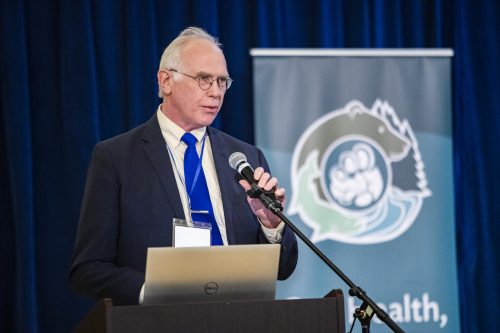Friday Focus: Reports offer paths to improvement
May 9, 2019

— by Larry Hinzman, vice chancellor for research
On April 16, UAF hosted visitors from the U.S. National Academies of Science, Engineering and Medicine and the University of Michigan. Our guests presented key recommendations from NASEM’s recent reports entitled “Sexual Harassment of Women: Climate, Culture and Consequences in Academic Sciences, Engineering and Medicine” and “Branches from the Same Tree: The Integration of the Humanities and Arts with Sciences, Engineering and Medicine in Higher Education.”
I saw the presentation on the sexual harassment report six months ago and felt there were good suggestions that could be applied in Alaska. While our state does suffer with one of the highest rates of sexual assault in the nation, our university is a center of enlightenment and can propagate an attitude of respect, honor, and lawfulness throughout our communities.
The sexual harassment report recommends that anti-sexual harassment training programs should focus on changing behavior, not on changing beliefs. Requiring appropriate behavior in the workplace is a minimal expectation that will yield a respectful work environment and hopefully positive attitudes and ingrained conduct.
It is important that UAF maintain diverse, inclusive and respectful work environments where contributions of all faculty, staff and students are valued. UAF must be a bastion of learning and discovery, a place where we guide our students to fulfill their degrees and their potential. UAF should be a place where all our employees find satisfaction in their accomplishments and careers and contentment in their workplace relationships. Implementing these recommendations will make UAF stronger and will improve the workforce capability and productivity of our state and nation.
The report on integrating humanities and arts with sciences and engineering encouraged co-teaching and cross-listing courses that integrate the arts and sciences. They further suggested that centers and institutes establish shared spaces for arts-integrated research and teaching. We are proud that many of our research projects have included the arts as equal partners from the onset. While we are fortunate to have good collaborations across our campus, more partnerships between our arts programs and research institutes may communicate outcomes and concepts more effectively. This integrative process promotes the rise of design thinking, which utilizes an approach to address problems that includes many perspectives and possibly many more benefits.
I would like to recognize and thank Mary Beth Leigh and Margo Griffith for their leadership and coordination of these events. As so many people noted during Staff Recognition and Development Day on Wednesday, it is the many contributions of our people that make UAF a great place to work and learn. I am grateful for the dedication, ideas and efforts to help our university continue to flourish.
Friday Focus is a column written by a different member of UAF’s leadership team every week.


